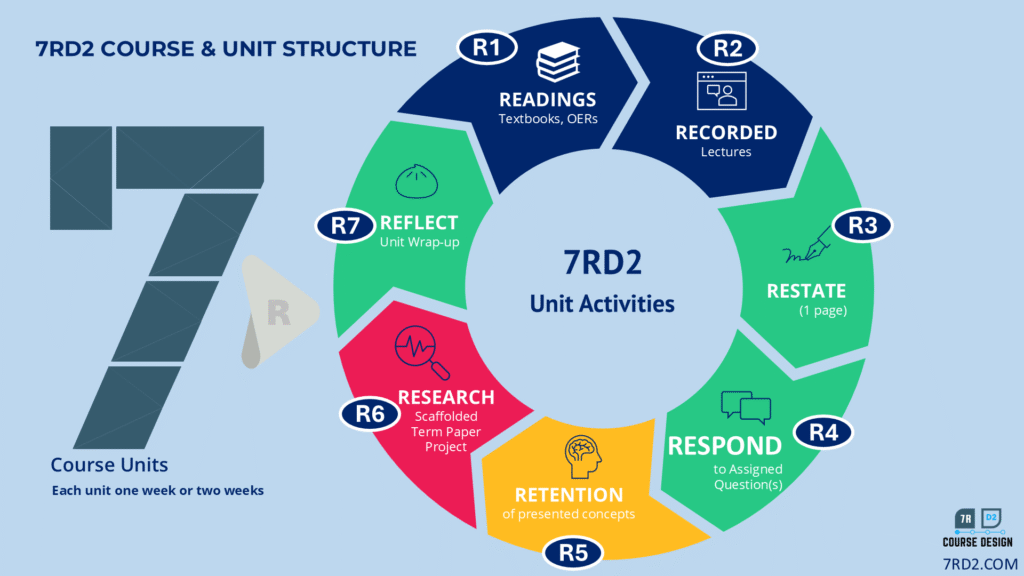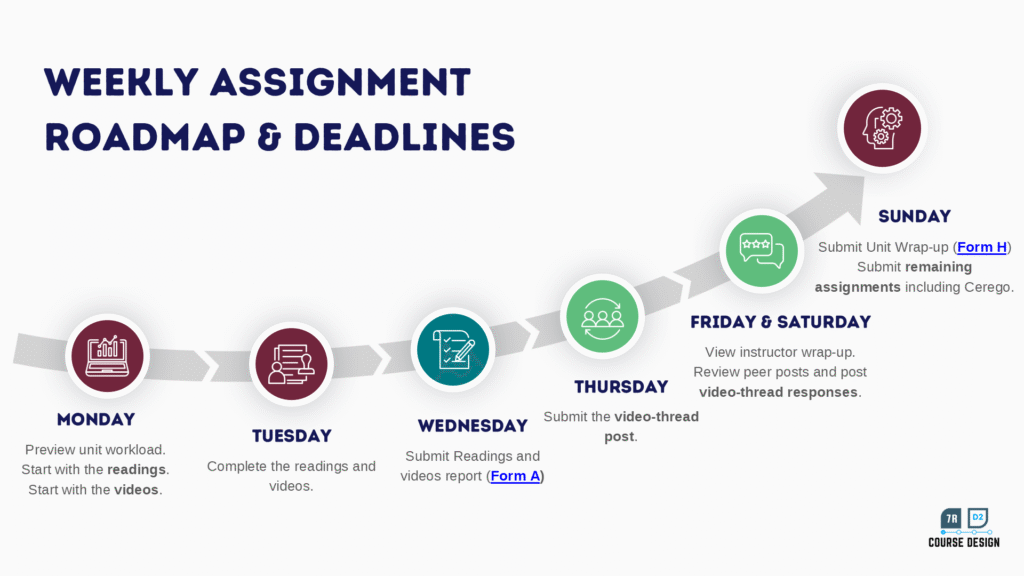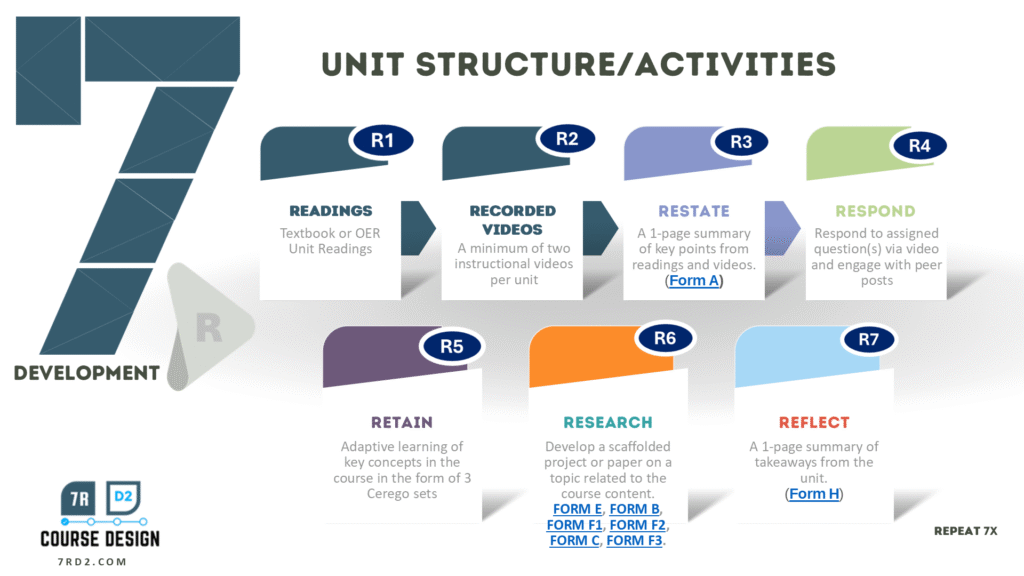Overview of the Components of a 7RD2 Online Course
Courses are typically designed in 7 units and delivered in 7 weeks. The activities in each unit are outlined below.


Course Forms/Rubrics
Forms serve as rubrics for each type of activity and are crucial to the 7RD2 process. They are concise and provide guidance for the completion of each type of learning activity.
Form A – Reading and Video Notes (All Units)
Form H – Unit Wrap-up (All Units)
Form E – Topic & Research Question (Unit 2)
Form B – Library Research Plan (Unit 3)
Form F1 – Annotated Outline (Unit 4)
Form F2 – Term Paper Draft (Unit 5)
Form C – ARC Writing Lab Report (Unit 6)
Form F3 – Final Term Paper (Unit 7)
Getting Started with the Course Development
Start with the Course Map Template
The course map includes step by step directions on what to consider as part of planning the course.
Download the Course MapCOURSE DEVELOPER TASKS
The 7RD2 process consists of seven core areas that guide course developers in creating a comprehensive online course. These areas ensure the course is structured, engaging, and aligned with learning objectives. Below are the tasks, followed by deadlines and enhanced best practices.
R1 – Plan the Course Foundation (Resources)
- Define clear, measurable unit learning objectives that align with the overall course goals.
- Select readings that directly support the unit learning objectives.
R2 – Design Reading-Based Activities
- Create student activities that demonstrate understanding of the readings (e.g., summarizing key points, analyzing concepts, or applying ideas to new contexts). Make changes to existing forms as necessary.
R3 – Develop Recorded Lectures
- Write scripts and record video lectures that reinforce the unit objectives and complement the readings. Plan for at least two videos per unit plus one course overview (minimum of 15 videos). For next-level lectures, consider setting up a home studio for less than $1,000.
R4 – Create Response (research) Discussion Prompts
- Develop (15) engaging questions tied to the video lectures, readings and/or other unit objectives to encourage student discussion and interaction in online forums. For business/MBA courses, consider case studies and post the details on the course map.
R5 – Design Retention Assessments
- Create list of 15 key concepts per unit.
- Build 3 Cerego sets (25 questions each) covering units 1-2, 3-4, and 5-7, focusing on retention of core concepts.
- Specify which option is chosen and how it aligns with the course objectives.
R6 – Establish the Research Project Framework
- Review and refine the term paper or major project guidelines, including topic options, structure, and grading rubric. Ensure it builds on course content.
R7 – Develop Unit Reflection Components
- Design a reflection activity for each unit (e.g., a 150-word summary, reflection paper, or application exercise) that encourages students to connect learned concepts to the course goals. Tailor this to your course as needed. For certain courses, consider using a hands-on project.
Home Studio Setup for the 7RD2 PROCESS
Audio and video quality is crucial in online courses. Here is a suggested setup for a home studio for less than $1,000.

